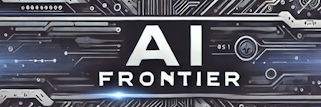In the ever-evolving world of technology, artificial intelligence (AI) continues to make waves and break boundaries in ways we never thought possible. One such boundary is the creative arts. The big question is, when artificial intelligence can make art, what does it mean for human creativity? This blog post will explore this thought-provoking topic, drawing on insights from a recent article published in The Guardian.
Artificial Intelligence: The New Picasso?
Artificial Intelligence has come a long way from merely being a tool for data analysis and predictive modeling. It has ventured into the realm of art, demonstrating the potential to create unique and compelling pieces of art. This leap has been made possible through the advent of advanced AI systems like DALL-E and Midjourney.
DALL-E, an AI program developed by OpenAI, has the impressive ability to generate images from textual descriptions. It can create anything from conventional objects like “a two-story pink house” to something as whimsical as “an armchair in the shape of an avocado.”
Midjourney, on the other hand, is a project by Refik Anadol, a media artist who uses AI to create stunning visual art installations. Midjourney utilizes machine learning algorithms to transform data into engaging and mesmerizing visual narratives.
The Impact of AI on Human Creativity
The involvement of AI in art creation leads us to question the impact it has on human creativity. Does AI’s ability to create art diminish the value of human creativity, or does it bolster it? Here’s what experts have to say.
- Enhancing Human Creativity: Some experts believe that AI can serve as a tool to enhance human creativity, not replace it. According to them, AI can assist artists by taking care of repetitive tasks and providing them with novel concepts and ideas. This perspective aligns with the stance of Refik Anadol, who views AI as a collaborator, not a competitor.
- Challenging the Concept of Originality: AI’s involvement in art creation also brings the concept of originality under scrutiny. Can a piece of art created by AI be considered original, or is it merely a sophisticated form of mimicry? This question remains a topic of debate among artists and scholars.
- Expanding the Artistic Landscape: Regardless of the debate around originality, it is undeniable that AI is expanding the artistic landscape. It is pushing the boundaries of what can be considered art and who can be considered an artist. With AI, the realm of possibilities for art creation is virtually limitless.
Implications for the Future
As AI continues to develop and infiltrate the artistic world, it presents exciting implications for the future of art and creativity. Here are a few potential outcomes:
- The Democratization of Art: With AI, art creation becomes more accessible to individuals who may not have traditional artistic skills. This democratization of art has the potential to foster a more inclusive and diverse artistic community.
- New Artistic Mediums: AI presents new mediums for art creation. Artists can now experiment with data and algorithms to create unique and captivating pieces of art. This could lead to an entirely new genre of art – one that is intertwined with technology.
- Economic Impact: The incorporation of AI in art could also have significant economic implications. Art created by AI has already started to gain monetary value, with the first AI-created artwork, “Portrait of Edmond de Belamy,” auctioned for $432,500 at Christie’s in 2018. This suggests a potential new market for AI-created art.
Conclusion
The intersection of artificial intelligence and art is a fascinating and complex subject. While some fear that the involvement of AI in art creation may diminish the value of human creativity, others see it as an opportunity to enhance human creativity and expand the artistic landscape. As AI continues to evolve and make its mark in the artistic world, we can look forward to a future where art and technology are seamlessly intertwined, opening up new avenues for creativity and expression.
For more insights on the impact of AI on different sectors, check out our previous blog posts on AI in Healthcare and AI in Education.
For further reading, visit the original article on The Guardian or explore other authoritative sources like the MIT Technology Review.
